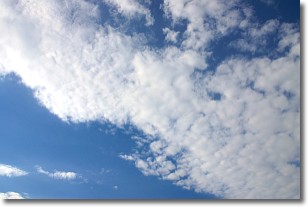Weather Alert in Illinois
Flash Flood Warning issued August 12 at 4:05PM CDT until August 12 at 6:00PM CDT by NWS Chicago IL
AREAS AFFECTED: Cook, IL; Will, IL
DESCRIPTION: At 405 PM CDT, Doppler radar and automated rain gauges indicated generally decreasing rainfall rates over the last half hour across the area. Multiple public reports of roadway flooding have been received due to earlier rainfall. Additional slow-moving thunderstorms are developing and moving into the area with rainfall rates up to 2 inches per hour. Additional rainfall may worsen flooding or cause water to stop receding. Up to 3.5 inches of rain have fallen so far. HAZARD...Flash flooding. SOURCE...Trained spotters. IMPACT...Rapid-onset flooding of creeks, streams, drainage ditches, streets, underpasses, low-lying areas, and other poor drainage areas. Some locations that will experience flash flooding include... Chicago, Hammond, Orland Park, Tinley Park, Oak Lawn, Calumet City, Chicago Heights, Roseland, Englewood, South Shore, Lansing, Oak Forest, Harvey, New Lenox, Homer Glen, Blue Island, Munster, Dolton, Park Forest and Homewood.
INSTRUCTION: A Flash Flood Warning means rapid-onset flooding is imminent or may already be occurring. Persons along creeks, drainage ditches, and other waterways should take immediate precautions to protect life and property.
Want more detail? Get the Complete 7 Day and Night Detailed Forecast!
Current U.S. National Radar--Current
The Current National Weather Radar is shown below with a UTC Time (subtract 5 hours from UTC to get Eastern Time).

National Weather Forecast--Current
The Current National Weather Forecast and National Weather Map are shown below.

National Weather Forecast for Tomorrow
Tomorrow National Weather Forecast and Tomorrow National Weather Map are show below.

North America Water Vapor (Moisture)
This map shows recent moisture content over North America. Bright and colored areas show high moisture (ie, clouds); brown indicates very little moisture present; black indicates no moisture.

Weather Topic: What are Stratus Clouds?
Home - Education - Cloud Types - Stratus Clouds
 Next Topic: Wall Clouds
Next Topic: Wall Clouds
Stratus clouds are similar to altostratus clouds, but form at a
lower altitude and are identified by their fog-like appearance, lacking the
distinguishing features of most clouds.
Stratus clouds are wider than most clouds, and their base has a smooth, uniform
look which is lighter in color than a nimbostratus cloud.
The presence of a stratus cloud indicates the possibility of minor precipitation,
such as drizzle, but heavier precipitation does not typically arrive in the form
of a stratus cloud.
Next Topic: Wall Clouds
Weather Topic: What are Altocumulus Clouds?
Home - Education - Cloud Types - Altocumulus Clouds
 Next Topic: Altostratus Clouds
Next Topic: Altostratus Clouds
Similar to cirrocumulus clouds, altocumulus clouds are
characterized by cloud patches. They are distinguished by larger cloudlets
than cirrocumulus clouds but are still smaller than stratocumulus clouds.
Altocumulus clouds most commonly form in middle altitudes (between 2 and 5 km)
and may resemble, at times, the shape of a flying saucer.
These uncommon formations, called altocumulus lenticularis, are created by uplift
in the atmosphere and are most often seen in close proximity to mountains.
Next Topic: Altostratus Clouds
Current conditions powered by WeatherAPI.com




